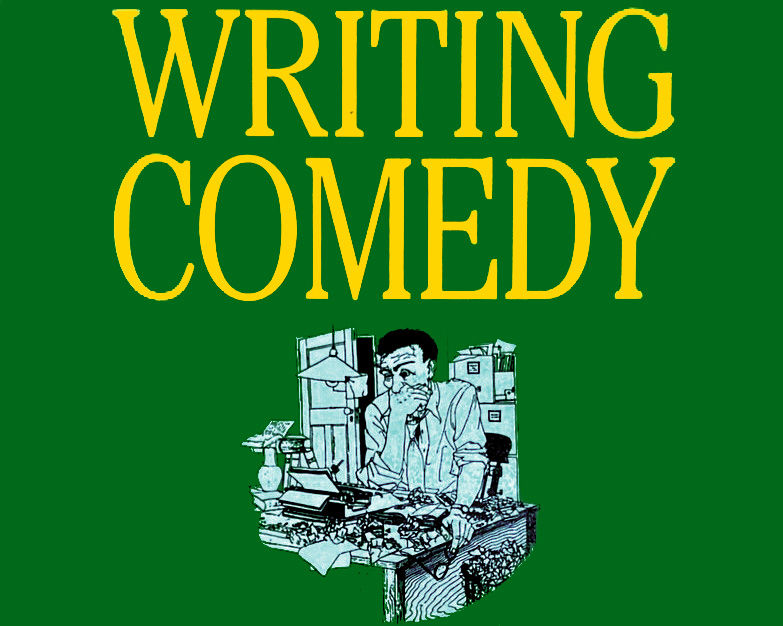Writing Comedy - Ronald Wolfe - Book Review
- Thomas Levi

- Aug 15
- 4 min read
When you’re drawn to the world of theatre, film, or television, and comedy lies at your heart, you’re driven by a single question: what will equip you with the tools to make people laugh? Aspiring writers want to learn their craft—but is Writing Comedy by Ronald Wolfe a must-read?
Ronald Wolfe is not merely a commentator—he’s the creator behind beloved British sitcoms such as On the Buses and The Rag Trade. From that vantage, Writing Comedy unfolds as a thoughtful, accessible guide into the craft of bringing laughter to the stage and screen. Opening the book is like stepping into Wolfe’s writer’s room, where set pieces are dissected, character banter is broken down, and comedy is shown not as whimsy, but as design and timing. Just remember, unpacking comedy is like dissecting a frog - you might learn something, but the frog dies… prepare to never see comedy in the same way again.
Early in the book, Wolfe tackles the often-daunting question: “Are there formulas for comedy?” His answer: Yes, but these formulas are not inflexible rules; they are frameworks. He introduces the concept of the set piece, a moment of structured absurdity that can anchor any comedic scene. For writers working in stage or screen today, the idea prevails: a carefully crafted set piece can turn your scene from flat to unforgettable.
As the book flows into How Do You Start to Write a Sketch?, Wolfe offers practical guidance for short, powerful comedic moments. Dialogue that snaps, situations that punch, and characters that enter with a purpose. This chapter resonates across formats, whether you’re writing a mini skit for an online series or framing a punchy scene in a play.
Then comes The Half-Hour Situation Comedy, and here the book starts to feel like a conversation from a different era. Wolfe’s voice is grounded in a time when half-hour sitcoms were commissioning staples. Although today’s streaming-driven, binge-worthy dramas have overtaken that model, his examination of pacing and structure still illuminates the anatomy of a well-constructed comedic episode. It’s a chance to learn how sitcoms were turned into finely tuned engines for laughs. Something that still matters when you study beat, rhythm, and build-up.
Wolfe’s chapter on Hammering Out the Storyline follows, offering a clear and serviceable blueprint for plotting comedy. It’s an efficient primer, though it doesn’t quite delve as deeply as Robert McKee’s Story, but for those looking for efficient guidance on comedic storytelling arcs, it does the job.
Where Wolfe shines brightest is in Characterisation. Here, he draws on decades of crafting characters who still live in British comedy lore. He shows how defining traits, illusory or exaggerated, can yield characters who are funny first, humans second. This chapter is a compelling reminder: strong comedy is driven from within character, and even in a changing media world, those truths stand firm.
“What are we going to write about this week?” he asks in another chapter that, on the surface, might appear redundant as sitcom commissioning has shifted. Yet Wolfe’s strategies for keeping writing fresh, for evolving characters week by week, remain valuable. He lays out exercise-like prompts that can spark the most stubborn creative blocks, making this a useful section for today’s writers across platforms.
Perhaps one of the most universally relevant chapters is Drama and Comedy – The Same Tricks. Wolfe gently opens a door that many writers miss: the notion that both genres share the same structural core—conflict, tension, stakes—and their difference lies only in tone. While John Vorhaus’ The Comic Toolbox explores this more extensively, Wolfe gives you the entry key: narrative machinery doesn’t care if it’s chuckling or crying.
Some chapters in the book — Working Abroad, The Daily Routine, and Breaking In—have Wolfe reflecting on his writerly life. It’s a nostalgic peek into how comedy television was made half a century ago, with stories that feel charming and quaint. In today’s ever-changing entertainment industry, these tales may not mirror the current pathways into screenwriting, but they are a valuable window into the past and the origins of the systems we build on now.
Reading Writing Comedy today, you’ll find it brimming with practical wisdom for scene construction, character invention, and comedic scenario-building. Yes, you’ll encounter cultural references that might feel old-fashioned. Yes, the industry map Wolfe draws may not match the modern landscape of streaming, short-form content, or web-based sketches. But that’s part of its value. It invites modern writers to bridge tradition and innovation, to stand on the shoulders of those who laboured in television’s golden age.
If you’re like me, you’ll finish this book ready to write the next Keeping Up Appearances, or One Foot in the Grave, but you will have to remind yourself that as sterling as your script may be… It will land at the bottom of a commissioning pile in modern television.
In the hands of a thoughtful reader, Writing Comedy becomes both a manual and a time capsule. You gain the benefit of Wolfe’s seasoned eye. His years spent forging laugh tracks, crafting characters, and structuring scenes so the humour blossoms inevitably from conflict. For the Elemental Theatre Blog’s audience of aspiring writers, the purchase is more than worth it. Wolfe may not guide you through TikTok comedy or streaming pilots for Amazon Prime, but he offers something equally precious: the artistry of comedy refined by experience.
If you want to learn comedy’s structural DNA from a writer who earned the right to write this book, Writing Comedy deserves a place on your shelf. The industry may have evolved, but the core techniques of character, timing, and structure remain as vital as ever.






















































Comments